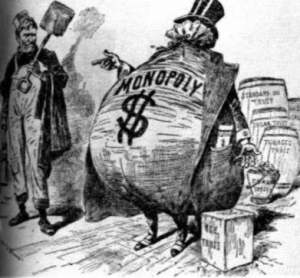A recent Delhi High Court Order quashed the PNGRB’s (Petroleum and Natural Gas Regulatory Board) right to regulate the prices of city gas distribution. Indraprastha Gas Ltd.(IGL) is a city gas distribution company in the National Capital Region (NCR) had challenged PNBGRB’s order dated 9th April 2012 which directed IGL to reduce the selling price of CNG supplied by IGL . PNGRB had determined the Network Tariff and Compression Charges for NCR at Rs.38.58 per MMBTU and Rs. 2.75 per kg respectively. PNGRB directed IGL to not only reduce its prices, but also to do it on retrospective effect from 1st April 2008 onwards. IGL went to the High court and managed to get PNGRB’s order quashed by questioning legal powers of PNGRB to issue such directives.
However, the judgement raises various issues of powers of regulators, firms taking advantage of monopoly businesses, consumer interests etc. The judgement focuses more on the legal aspects of powers of PNGRB rather than on the economical, commercial and technological aspects of City Gas Distribution.
City Gas Distribution is an industry with monopoly characteristics (like IGL has in NCR) and hence requires a regulator to ensure that the consumers’ interests are protected. The physical gas distribution network (comprising of pipelines, valves, meters etc.), once laid down, acts like a monopoly and has issues such as right of way issues and redundancy effects. However, the gas distribution network is a physical asset which can be shared by various gas suppliers through open access allowed in natural gas transportation like ‘Open Access’ in electricity and ‘Local Loop Unbundling’ in telecommunication.
In electricity, after paying open access charges, it can be transmitted on any existing network by any generator. Similarly, in telecommunication, the infrastructure (telecom towers) and content (service provider) was separated to enable better asset utilisation.
It may be difficult to increase the competition in the industry initially, additional competitors need to be introduced to benefit the consumers given sufficient gas supply is available. Since, the new competitor would use the existing network, a ‘Network Operator’ (such as POSOCO – Power System Operation Company in electricity sector) would be required and in that case as well a regulator would be required. When competition and subsequently a fair market emerges, the infrastructure would also increase leading to reduced capacity constraints, additionally also benefitting the consumers with lower price of the gas.
Several principles of economics that we have learnt so far in Term-I are at work here!

Hi Alok,
That’s a good expert view, with application of concepts of monopoly market,
It would be great if you could share more of your views on energy sector with more details on regular basis,
Navanee
one dispute over pngrb is on ahmedabad for allowing cng by hpcl besyds havin adani as d cgd ova de.